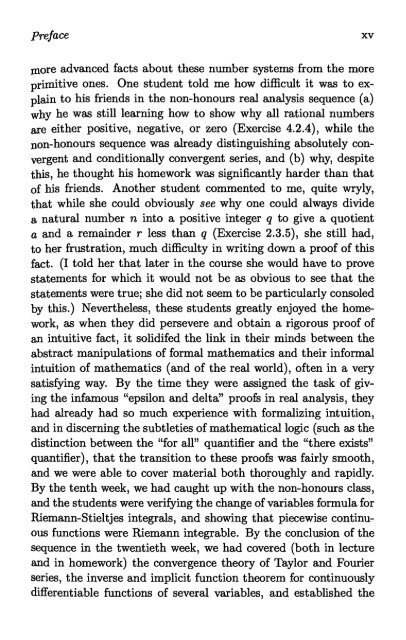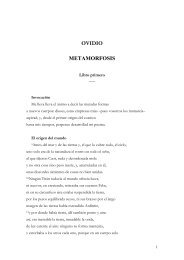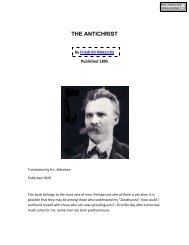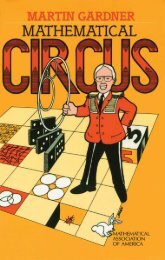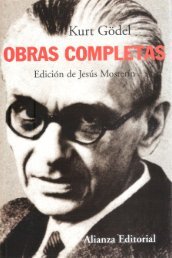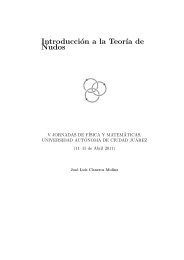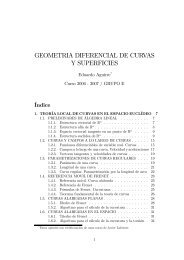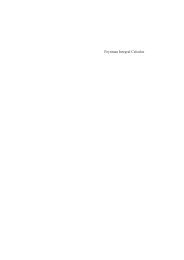Tao_T.-Analysis_I_(Volume_1)__-Hindustan_Book_Agency(2006)
Tao_T.-Analysis_I_(Volume_1)__-Hindustan_Book_Agency(2006)
Tao_T.-Analysis_I_(Volume_1)__-Hindustan_Book_Agency(2006)
Create successful ePaper yourself
Turn your PDF publications into a flip-book with our unique Google optimized e-Paper software.
Preface XV<br />
more advanced facts about these number systems from the more<br />
primitive ones. One student told me how difficult it was to explain<br />
to his friends in the non-honours real analysis sequence (a)<br />
why he was still learning how to show why all rational numbers<br />
are either positive, negative, or zero (Exercise 4.2.4), while the<br />
non-honours sequence was already distinguishing absolutely convergent<br />
and conditionally convergent series, and (b) why, despite<br />
this, he thought his homework was significantly harder than that<br />
of his friends. Another student commented to me, quite wryly,<br />
that while she could obviously see why one could always divide<br />
a natural number n into a positive integer q to give a quotient<br />
a and a remainder r less than q (Exercise 2.3.5), she still had,<br />
to her frustration, much difficulty in writing down a proof of this<br />
fact. (I told her that later in the course she would have to prove<br />
statements for which it would not be as obvious to see that the<br />
statements were true; she did not seem to be particularly consoled<br />
by this.) Nevertheless, these students greatly enjoyed the homework,<br />
as when they did persevere and obtain a rigorous proof of<br />
an intuitive fact, it solidifed the link in their minds between the<br />
abstract manipulations of formal mathematics and their informal<br />
intuition of mathematics (and of the real world), often in a very<br />
satisfying way. By the time they were assigned the task of giving<br />
the infamous "epsilon and delta" proofs in real analysis, they<br />
had already had so much experience with formalizing intuition,<br />
and in discerning the subtleties of mathematical logic (such as the<br />
distinction between the "for all" quantifier and the "there exists"<br />
quantifier), that the transition to these proofs was fairly smooth,<br />
and we were able to cover material both thoroughly and rapidly.<br />
By the tenth week, we had caught up with the non-honours class,<br />
and the students were verifying the change of variables formula for<br />
Riemann-Stieltjes integrals, and showing that piecewise continuous<br />
functions were Riemann integrable. By the conclusion of the<br />
sequence in the twentieth week, we had covered (both in lecture<br />
and in homework) the convergence theory of Taylor and Fourier<br />
series, the inverse and implicit function theorem for continuously<br />
differentiable functions of several variables, and established the


